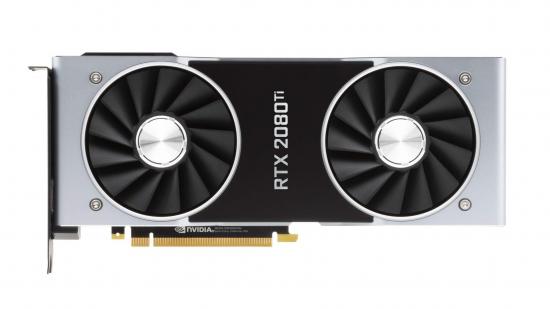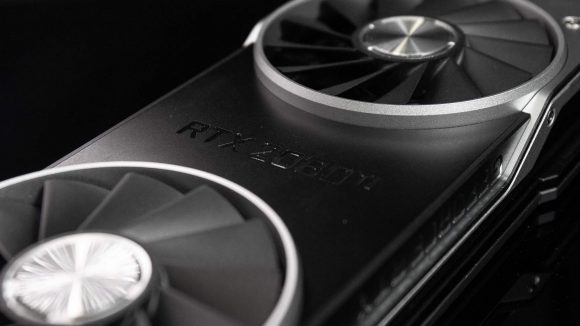Nvidia has today launched a brand new graphics driver to fix the BSOD problems its new RTX 2080 Ti graphics cards have been experiencing. That’s not going to fix any hardware-level problems with your actual GPU, but if you’re one of the people experiencing a blue screen of death when you’re gaming it should sort out the problem with game crashes.
These RTX 2080 Ti problems have been shown to be related to the displays the cards are related to and are widespread enough that Nvidia has had to release a whole new driver to mitigate the issues. They’re mostly limited to high refresh rate displays and also with G-Sync monitors. Sometimes knocking down the refresh rate or disabling G-Sync ‘fixes’ the problem, but then you are limiting the functionality of both your GPU and your monitor.
The new Nvidia Turing GPUs are also experiencing crashes when plumbed into multi-monitor setups, and the new drivers also deal with this too. Nvidia notes in the drivers’ release document that high multi-monitor idle power draw is one of the fixed issues.
What’s not been fixed in this Battlefield V Game Ready GeForce 416.81 driver update (US Link | UK Link) are any problems related to the artifacting some users are reporting with their RTX 2080 Ti cards. These seem to be mostly limited to Nvidia’s own Founders Edition GPUs, but are not necessarily associated with any specific type of display and therefore won’t be magically fixed by a mere software update.
Nvidia GeForce Driver Version 416.81
Fixed issues:
- [Windows Defender Application Guard][vGPU][Surround]: Edge Browser with Application Guard cannot be opened when Surround is enabled.
- [Turing GPU]: Multi-monitor idle power draw is very high.
- [GeForce RTX 2080 Ti][G-Sync]: Blue-screen crash may occur when exiting games when using a G-Sync monitor with a non-G-Sync monitor.
- [GeForce RTX 2080 Ti]: Stuttering occurs with HEVC video playback.
- [GeForce GTX 970]: When audio playback is paused, audio receiver switches from multi-channel to stereo. Increased period from 5 seconds to 10 seconds.
- [GeForce GTX 1060]: AV receiver switches to 2-channel stereo mode after 5 seconds of audio idle.
- [SLI][NVIDIA TITAN X][NVENC]: Recording and streaming of NVENC applications do not work.
- [DirectX 11 games]: Mouse cursor causes FPS to go out of sync with windowed GSync.
- [ARK Survival]: Improved game stability.
- [Shadow of the Tomb Raider]: Improved game stability.
- [Witcher 3 Wild Hunt]: Flickering occurs during gameplay.
- [Monster Hunter World]: Corruption is seen when Volume Rendering is off.
- [Far Cry 5]: Flickering occurs during gameplay.
Remaining issues:
- [SLI][GeForce RTX 2080/2080Ti]: Single GPU response slows down after enabling/disabling SLI, requiring system reboot.
- [GeForce GTX 1080Ti]: Random DPC watchdog violation error when using multiple GPUs on motherboards with PLX chips.
- [GeForce GTX 780]: Activity on the desktop lags.
- [SLI][HDR][Battlefield 1]: With HDR enabled, the display turns pink after changing the refresh rate from 144 Hz to 120 Hz using in-game settings.
- [Firefox]: Cursor shows brief corruption when hovering on certain links in Firefox.
- [G-Sync]: G-sync may not disengage after exiting games.
GamersNexus has published the first part of its own investigation into the dead or dying RTX 2080 Ti cards users have been sending its way for testing. It has been able to repeat the crashes and BSODs associated with the high refresh rate and G-Sync monitors, but has yet to get anywhere with the thorny issue of visual artifacting of the new Turing GPUs.
We still don’t know whether that’s limited to a certain batch of Turing TU102 GPUs, whether it’s related to a specific batch of GDDR6 memory, or whether it’s something else entirely. What GN does say, however, is that there are definite hardware issues with some of the cards that have been sent its way.
At least some of the RTX 2080 Ti issues have been fixed – and with a simple fix at that – which is a positive and will be a comfort to the folks out there suffering with their $1,200 graphics card. But of little comfort to any owners whose GPUs have been flaking out rather more.


